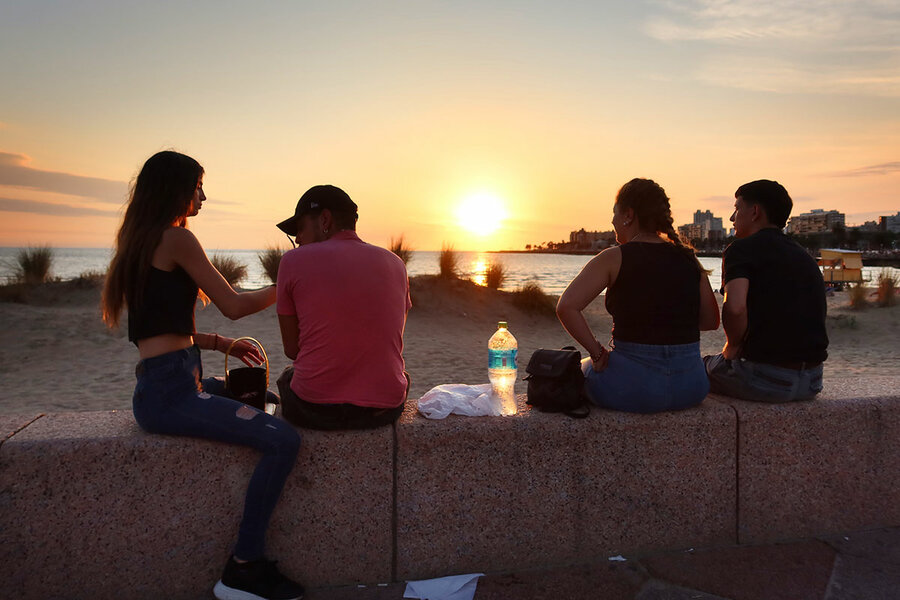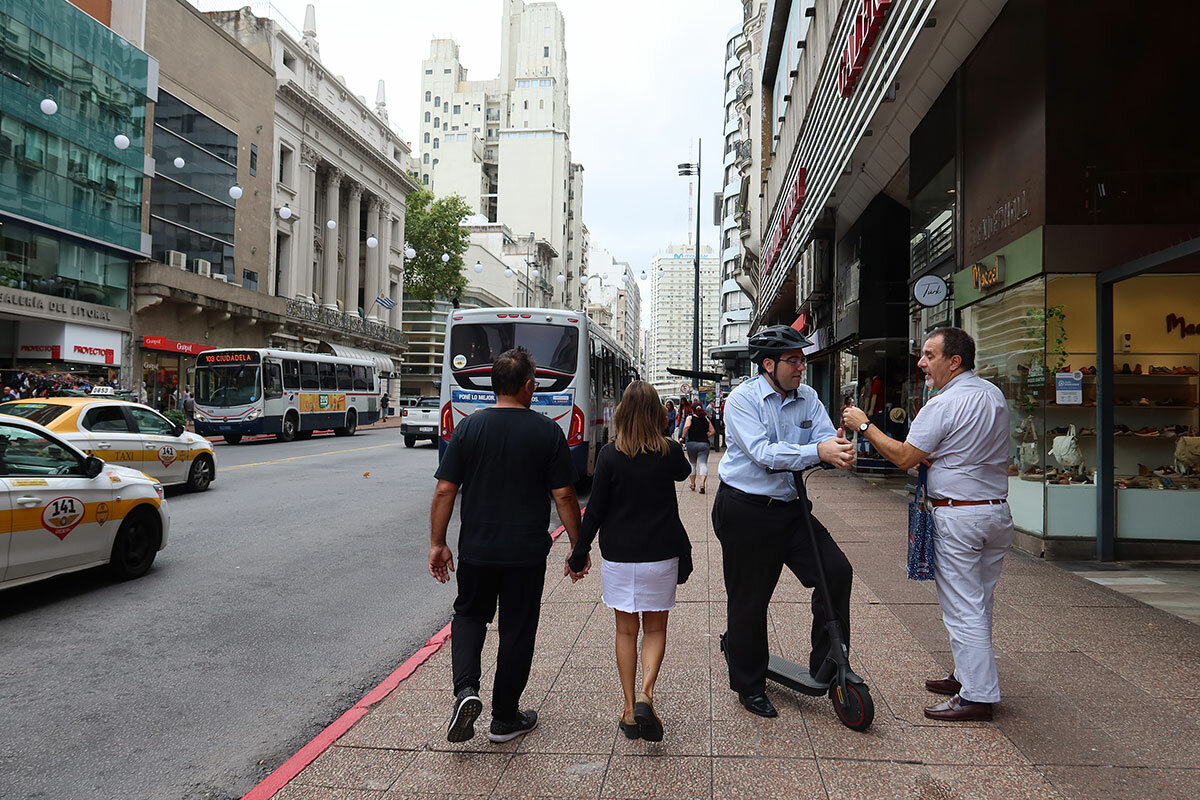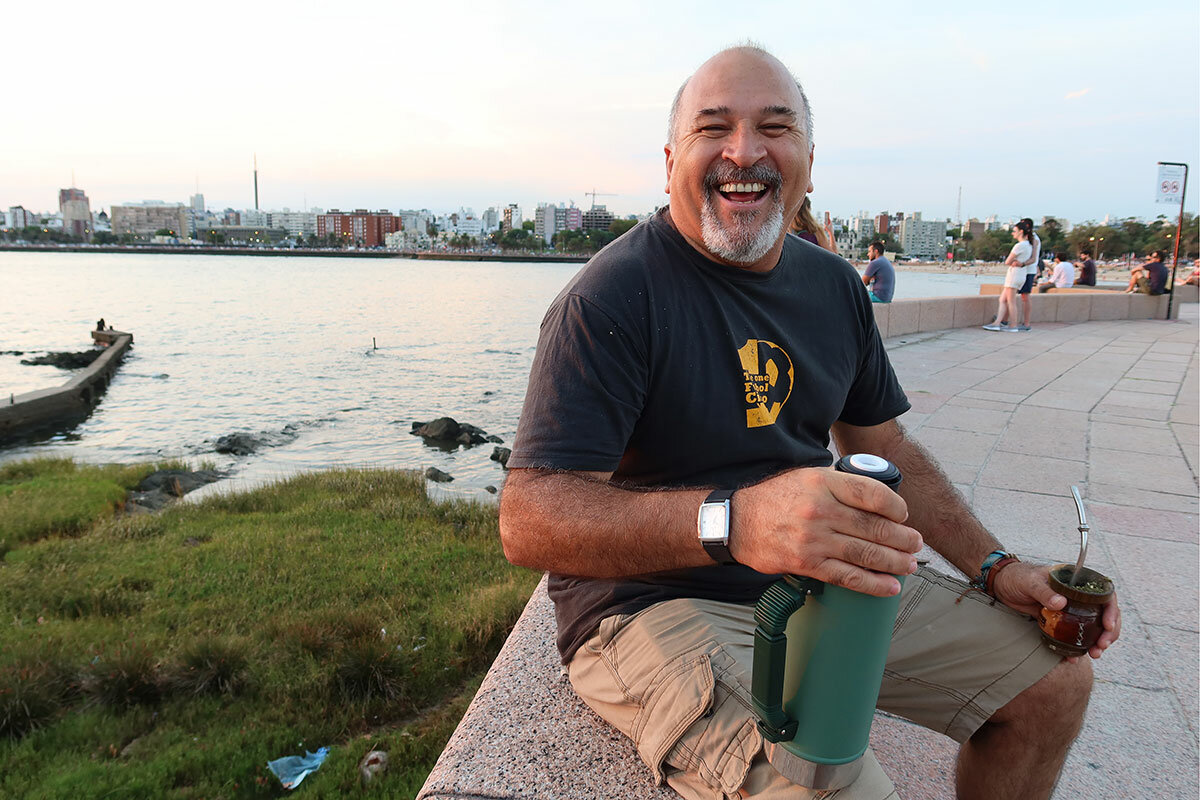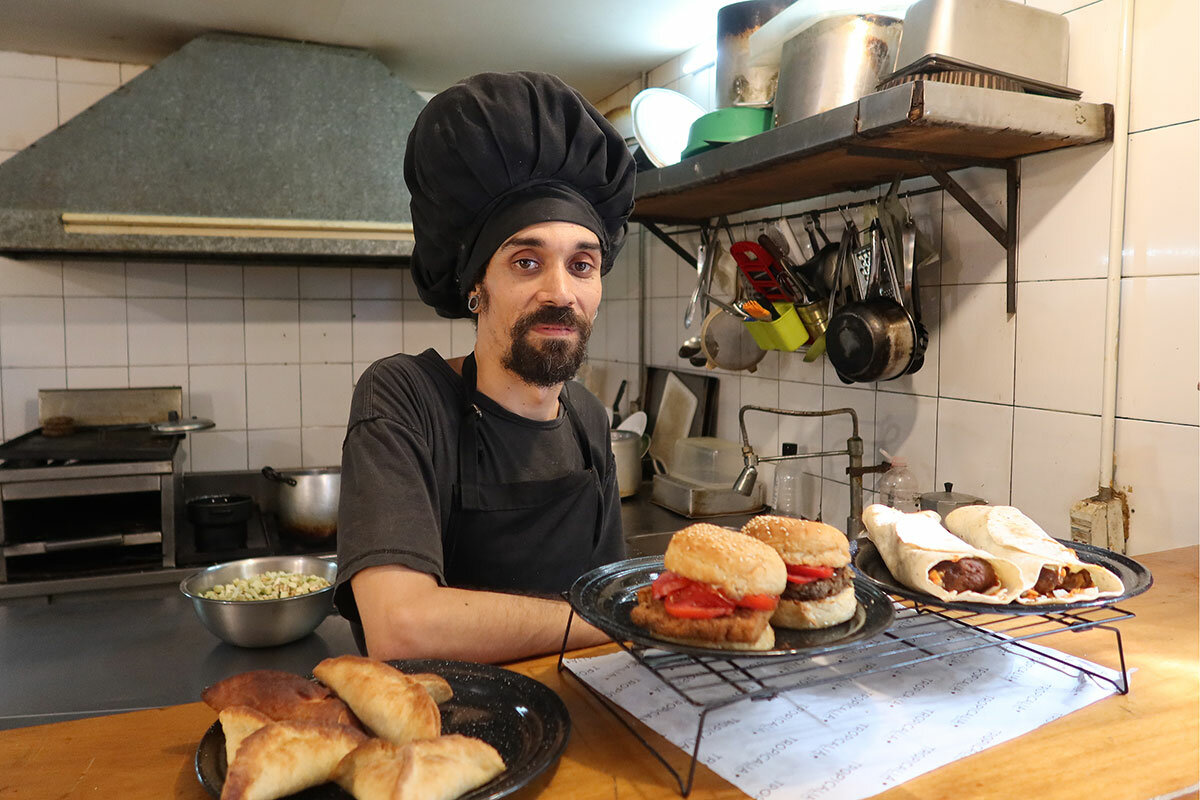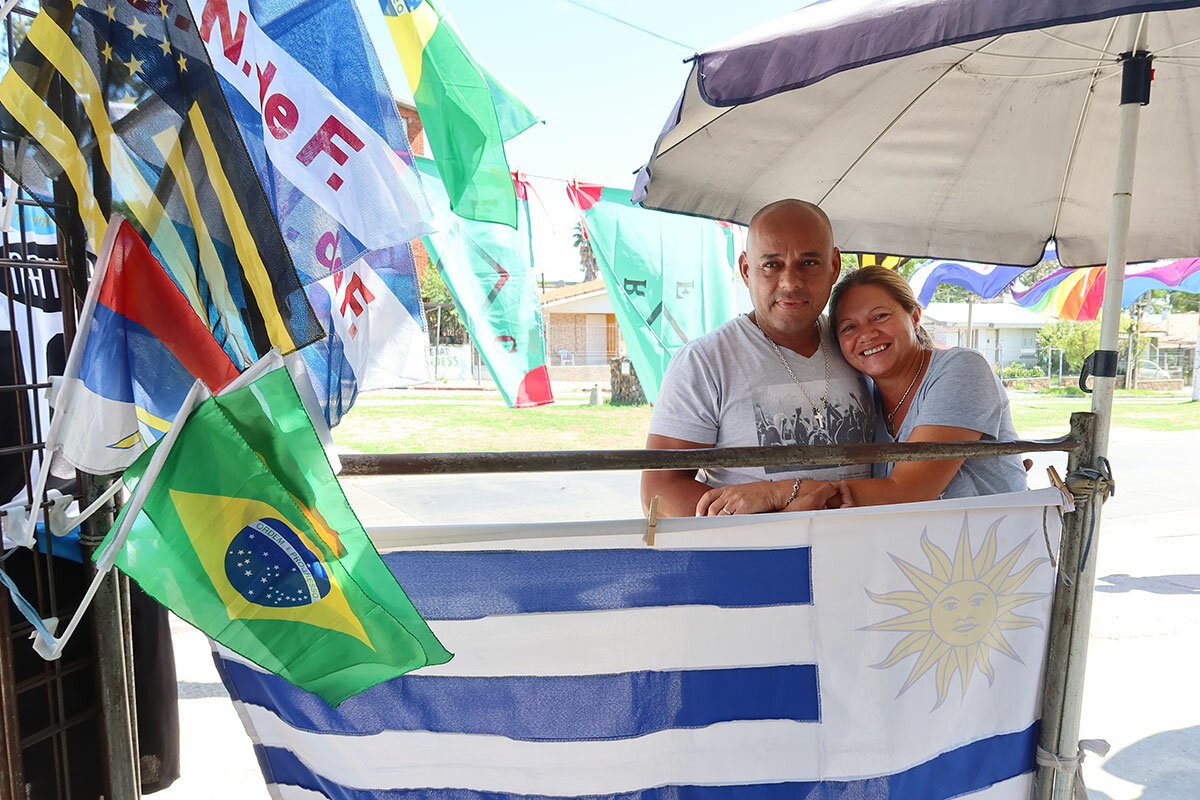‘Goldilocks’ of Latin America democracy? Uruguay’s model of stability.
Loading...
| Montevideo and Colonia del Sacramento, Uruguay
The strongest democracy in the Americas isn’t the United States or Canada, but a small, quiet nation home to 3 million people and four times as many cows.
Nestled between Argentina and Brazil, Uruguay has long been considered something of an exception in a region of headline-grabbing political turmoil and economic crises. It boasts the highest GDP per capita and lowest poverty rates in Latin America, with a social safety net rivaling some European countries.
To be sure, it’s no utopia: Disparities exist, and many lament what can be a prohibitively high cost of living.
Why We Wrote This
A story focused onAs countries across the Americas struggle with political, social, and economic crises, Uruguay is emerging as something of a model of stability for the region.
But geographic and historic advantages have laid the foundation for Uruguay’s success story, including lots of pasture, few people, and the absence of a marked social hierarchy dating back to the colonial period, in addition to a culture that prizes civility and moderation. As protests simmer in Peru, migrants fill border cities in Mexico, politicians sow divisions in the U.S., and inflation soars in Argentina, the Uruguayan model seems to be working. How it got here – and what conditions are keeping that balance in place – is increasingly under the microscope.
“There’s a rejection of any politician looking to profit from extreme polarization. That means finding balance,” says Javier Rodríguez Weber, an economic historian at the University of the Republic in Montevideo. Uruguay functions under what’s “like the Goldilocks rule: not too hot, not too cold.”
Tolerance for inequality
Uruguay’s social equality today is linked to its relative lack of natural riches historically. With no gold or silver to be found during the colonial era, the wealthy in Montevideo were poor compared to elites in Buenos Aires or Mexico City. No entrenched aristocracy or marked social hierarchy took hold as it did in other parts of Latin America.
Free and universal education, public health care, strong unions, and a solid social security system have carried forward that legacy, creating a social balance that reflects the Uruguayan ethos of “nadie es más que nadie,” or nobody is worth more than anybody else. It now has the largest middle class in the Americas, including over 60% of the population.
“Economic inequality generates instability. It’s like a pressure cooker,” says Mr. Rodríguez Weber. “In Uruguay there is less tolerance for inequality than in other countries.”
Uruguay wasn’t always known for its stability. In the 19th century, a series of civil wars racked the nation amid deep political divides. And it was just as susceptible as its neighbors to the wave of dictatorships that swept the region in the 1970s. Its dictatorship lasted from 1973 to 1985.
“Uruguay has achieved what it has because of a large effort to think about how to resolve the problems of political stability, peace, democracy. It took cognitive effort,” says Adolfo Garcé, a political scientist at the University of the Republic.
“There is a stability here that is enviable for any other country in the region,” says Ruben Florencio, a civil servant at the Paraguayan consulate here and who walks along the famous La Rambla shoreline every evening after work. “When you’re not worrying about what you’re going to eat, you can have other ambitions.”
Yet as immigrants from across Latin America move to Uruguay to take advantage of its relative calm, reality doesn’t always conform to expectations.
Rodrigo Alcantara left his native Rio de Janeiro six years ago, tired of the police violence. He opened a vegan Brazilian restaurant in 2021 after decades toiling in kitchens.
“Stability? I haven’t found that yet,” he laughs, rattling off prices of basic goods that continue to surprise him here. “Yes, there’s a certain ease,” he says, like minimal red tape for opening a business, strong laws protecting workers, and the security he feels on the streets.
“But I see a type of poverty that’s more hidden,” he says.
Sitting at a corner table is one of his regulars who sleeps in a homeless shelter. “The country is too small to have this many people living on the streets,” Mr. Alcantara says. Uruguay has essentially eliminated extreme poverty, yet an estimated 2,500 people in Montevideo are homeless.
And those who have found stability have had to be patient. Sofía Ortega sits on the floor of her one-bedroom apartment, framed by the vintage clothes she’s made a business of reselling on Instagram.
“Saving doesn’t exist,” she says. One study recently found that prices of many basic goods were up to three times more expensive in Uruguay than in neighboring Argentina. In her mid-30s, Ms. Ortega is one of the only unmarried people she knows able to afford to rent her own place.
A minimum wage equal to $540 per month means “the low here isn’t so low,” says Cristian Cabrera, who sells crystals in the historic town of Colonia del Sacramento.
Yet moderation isn’t always a good thing, he says. With housing in this area close to 50% of a monthly minimum wage, and basic Wi-Fi around 10%, Mr. Cabrera says he often wonders why no one is protesting more loudly.
“Biggest wealth?”
On a windy afternoon, across a wide avenue from the Legislative Palace in Montevideo, the country’s centralized union is doing just that. Like in France, the government is reforming the retirement system, here raising the age from 60 to 65. Unlike in France, nothing is on fire.
“We are more conciliatory. There is more dialogue. We negotiate more,” says Guillermo García, a union member out protesting. “We can argue about many things, but our unity is not debated.”
These are qualities he says are reflected in politics at large here. New administrations in Uruguay tend to refrain from undoing the work of previous governments, typically a hallmark in Latin American political transitions, and instead tweak details.
Uruguay ranked first in the Americas (and 11th in the world) in the Economist Intelligence Unit’s 2022 Democracy Index, which takes into consideration aspects like electoral processes, political participation and culture, and civil liberties.
The sense of togetherness sometimes “leads to solutions that might not be as efficient as you might want ... but that avoid anybody losing out too badly,” says Adrián Fernández, an economist at the Center for Economic Research in Montevideo.
Despite what are viewed as political traditions keeping the collective good in mind, some Uruguayans fear they aren’t immune to global trends - like a growing threat of polarization. And as Uruguay toes the line between economic stability and stagnation, economists say investment in things like education, science, and technology are necessary to preserve Uruguay’s democratic strength. In 2019, less than 40% of the country’s youth graduated from high school.
On a recent afternoon, Graciela Cotelo scoops spoonfuls of ground beef and onions from a bucket onto sections of dough, then folds them into empanadas in the working-class neighborhood of Cerro. By her side, Jose Anchen dips her handiwork into boiling grease.
Uruguay’s relative prosperity is less obvious here. In the first half of the 20th century, this neighborhood was a thriving industrial area, home to three refrigeration plants that stored meat for export to Europe. Economic contraction following World War II led the plants to close, launching a spiral of economic deterioration.
Ms. Cotelo and Mr. Anchen say the neighborhood is on the mend, in part thanks to housing, employment, and infrastructure projects begun by the leftist coalition Frente Amplio, which came to power in 2004. Much of that work has continued since the more conservative National Party gained a majority in 2020, residents say.
Mr. Anchen didn’t vote for the National Party but says “this new government is doing good things, too.”
Across the street, Roberto Martínez, who sells caps, jerseys, and trinkets, agrees. He wouldn’t choose to live anywhere other than Uruguay. “I always tell my kids, the biggest wealth this country has is its democracy.”




